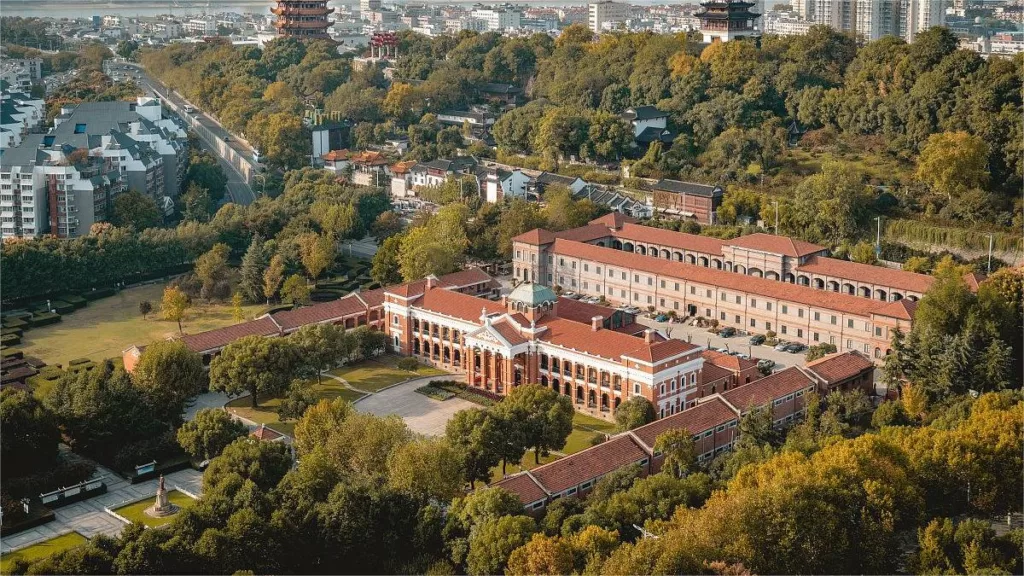Yue Ma Chang, Wuhan - Kaartje, geschiedenis, locatie en hoogtepunten


Yue Ma Chang in Wuhan (武汉阅马场), originally a training ground for the Qing military cavalry, evolved into a site with rich revolutionary traditions. It is a renowned square in Wuhan, known for its historical significance. After the establishment of the People’s Republic of China, the area was planned and transformed into a 4.8-hectare Shouyi Square. The square features a majestic red building, towering statues, prominent monuments, and lush pine and cypress trees. Yue Ma Chang has become a popular destination for people to come and admire, reflecting on its historical legacy and enjoying the scenic surroundings. This square stands as a testament to Wuhan’s history and is a significant landmark.
Inhoudsopgave
Basisinformatie
| Geschatte lengte van de tour | 0,5 - 1 uur |
| Ticket Prijs | Gratis |
| Openingstijden | 24 uur per dag |
Locatie en vervoer
Yue Ma Chang is centrally located in the Wuchang district of Wuhan, Hubei Province, China. Positioned at the southern foothills of She Shan (Snake Hill), it spans approximately 100 meters from east to west and 300 meters from north to south.
To get there, tourists can take bus 10. 401, 411, 413, 504, 522, 554, 561, 728, or 806 and get off at Pengliuyang Road Tiyu Street Stop (彭刘杨路体育街).
History of Yue Ma Chang
The historical site of Yue Ma Chang in Wuhan has a rich and multifaceted history that spans several dynasties and significant events. Initially believed to be the Chu Prince’s mansion during ancient times, it later served as a military training ground and drill field during the Ming Dynasty, known as the “Yue Bing Lou” or “Parade Ground Tower.” Situated outside the Wusheng Gate, it housed a three-room martial arts hall. In the Shunzhi period of the Qing Dynasty, the governor of Hubei, Liu Zhaolin, rebuilt a new training ground east of the Ming Chu Prince’s mansion. This became a place for the Qing military to practice martial arts and conduct martial examinations.
Over the centuries, Yue Ma Chang witnessed the highs and lows of Wuhan’s history. It played a crucial role in numerous significant events and became a symbol of revolutionary struggle, earning it the nickname “Revolutionary Red Square.” In June 1688, during the Qing Kangxi era, a rebellion occurred in Wuchang, leading to the establishment of the headquarters of the President of the Military and Cavalry at Yue Ma Chang. From that point onward, the site became a focal point for people’s resistance movements and revolutionary activities.
In January 1853, during the Taiping Rebellion, Taiping forces captured Wuchang, and Yue Ma Chang served as a platform for revolutionary propaganda and the swearing-in ceremony before marching to Nanjing. During the Xinhai Revolution in October 1911, the military government was established here, and the southern pagoda tower was used for military ceremonies, including the appointment of Huang Xing as the wartime supreme commander.
The significance of Yue Ma Chang continued into the May Fourth Movement, where thousands of students gathered for meetings and demonstrations. After the Northern Expedition forces captured Wuchang, the people of Wuchang assembled at Yue Ma Chang to celebrate the victory. It remained a rallying point for commemorating victories against Japan and the liberation of Wuhan.
In 1981, a grand event commemorating the seventieth anniversary of the Xinhai Revolution was held at Yue Ma Chang, highlighting its enduring importance as a site deeply intertwined with the revolutionary history of Wuhan and China.
Red Building in Yue Ma Chang
The Red Building situated in the northern part of Yue Ma Chang holds a pivotal historical role as the former site of the Military Government during the Wuchang Uprising of the Xinhai Revolution. Originally established in 1909 as the venue for the Hubei Advisory Council in the late Qing Dynasty, the Red Building was completed in 1910. This architectural complex covers an expansive area of over 18,000 square meters, with a building area of 6,000 square meters.
The Red Building’s design resembles administrative halls in modern Western countries, featuring two floors with a width of 73 meters and a depth of 42 meters. Built with brick and wood, it faces north to south. The upper floor is crowned by a centrally positioned, church-style tower, showcasing a grandeur reminiscent of classical Western architecture. The meticulous design includes intricate lines for doors and windows, while the exterior walls are adorned with reliefs depicting symbols such as ears of grain and lotus flowers, exuding an understated yet elegant charm.
Behind the main building, there is an additional two-story structure that served as the residence for members of the Advisory Council, offering accommodation and rest areas for council members. Today, the Red Building stands as a historical testament to the events of the Xinhai Revolution, attracting visitors with its architectural grandeur and embodying the spirit of revolutionary struggle that shaped modern China.
Historische plaatsen in Hubei, Wuhan bezienswaardigheden